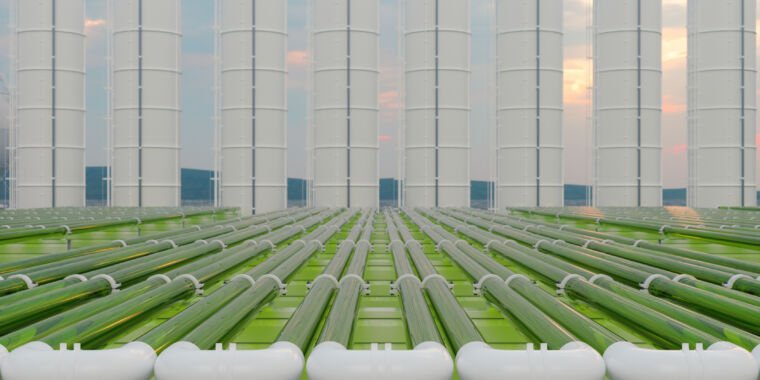To help with climate change, carbon capture will have to evolve

More than 200 kilometers off Norway’s coast in the North Sea sits the world’s first offshore carbon capture and storage project. Built in 1996, the Sleipner project strips carbon dioxide from natural gas—largely made up of methane—to make it marketable. But instead of releasing the CO2 into the atmosphere, the greenhouse gas is buried.
The effort stores around 1 million metric tons of CO2 per year—and is praised by many as a pioneering success in global attempts to cut greenhouse gas emissions.
Last year, total global CO2 emissions hit an all-time high of around 35.8 billion tons, or gigatons. At these levels, scientists estimate, we have roughly six years left before we emit so much CO2 that global warming will consistently exceed 1.5° Celsius above average preindustrial temperatures, an internationally agreed-upon limit. (Notably, the global average temperature for the past 12 months has exceeded this threshold.)
Phasing out fossil fuels is key to cutting emissions and fighting climate change. But a suite of technologies collectively known as carbon capture, utilization and storage, or CCUS, are among the tools available to help meet global targets to cut CO2 emissions in half by 2030 and to reach net-zero emissions by 2050. These technologies capture, use or store away CO2 emitted by power generation or industrial processes, or suck it directly out of the air. The Intergovernmental Panel on Climate Change (IPCC), the United Nations body charged with assessing climate change science, includes carbon capture and storage among the actions needed to slash emissions and meet temperature targets.

Governments and industry are betting big on such projects. Last year, for example, the British government announced 20 billion pounds (more than $25 billion) in funding for CCUS, often shortened to CCS. The United States allocated more than $5 billion between 2011 and 2023 and committed an additional $8.2 billion from 2022 to 2026. Globally, public funding for CCUS projects rose to $20 billion in 2023, according to the International Energy Agency (IEA), which works with countries around the world to forge energy policy.
Given the urgency of the situation, many people argue that CCUS is necessary to move society toward climate goals. But critics don’t see the technology, in its current form, shifting the world away from oil and gas: In a lot of cases, they point out, the captured CO2 is used to extract more fossil fuels in a process known as enhanced oil recovery. They contend that other existing solutions such as renewable energy offer deeper and quicker CO2 emissions cuts. “It’s better not to emit in the first place,” says Grant Hauber, an energy finance adviser at the Institute for Energy Economics and Financial Analysis, a nonpartisan organization in Lakewood, Ohio.
What’s more, fossil fuel companies provide funds to universities and researchers—which some say could shape what is studied and what is not, even if the work of individual scientists is legitimate. For these reasons, some critics say CCUS shouldn’t be pursued at all.
“Carbon capture and storage essentially perpetuates fossil fuel reliance. It’s a distraction and a delay tactic,” says Jennie Stephens, a climate justice researcher at Northeastern University in Boston. She adds that there is little focus on understanding the psychological, social, economic, and political barriers that prevent communities from shifting away from fossil fuels and forging solutions to those obstacles.
According to the Global CCS Institute, an industry-led think tank headquartered in Melbourne, Australia, of the 41 commercial projects operational as of July 2023, most were part of efforts that produce, extract, or burn fossil fuels, such as coal- and gas-fired power plants. That’s true of the Sleipner project, run by the energy company Equinor. It’s the case, too, with the world’s largest CCUS facility, operated by ExxonMobil in Wyoming, in the United States, which also captures CO2 as part of the production of methane.
Granted, not all CCUS efforts further fossil fuel production, and many projects now in the works have the sole goal of capturing and locking up CO2. Still, some critics doubt whether these greener approaches could ever lock away enough CO2 to meaningfully contribute to climate mitigation, and they are concerned about the costs.
Others are more circumspect. Sally Benson, an energy researcher at Stanford University, doesn’t want to see CCUS used as an excuse to carry on with fossil fuels. But she says the technology is essential for capturing some of the CO2 from fossil fuel production and usage, as well as from industrial processes, as society transitions to new energy sources. “If we can get rid of those emissions with carbon capture and sequestration, that sounds like success to me,” says Benson, who codirects an institute that receives funding from fossil fuel companies.
Source link




